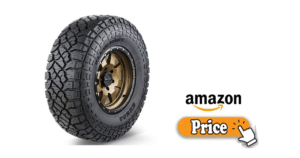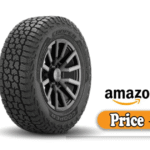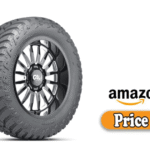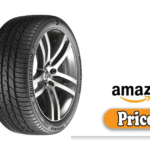When it comes to tires, most drivers focus on price, tread design, or brand reputation, but very few stop to think about where their tires are made and how that affects performance and reliability.
One of the brands that often comes up in discussions about affordability and value is Kenda Tires. Over the years, I’ve heard plenty of mixed opinions, some praising Kenda for its price and durability, others criticizing its consistency and performance.
After driving thousands of miles on a set of Kenda tires myself, I decided to write this in-depth article: “Kenda Tires Made In | My Honest Experience.”
Here, I’ll break down everything from the origins of Kenda and its manufacturing process to real-world performance, design quality, and even alternatives you might consider.
Whether you’re buying your first set of budget-friendly tires or simply curious about Kenda’s roots, you’ll find everything you need to know right here.
What I Like
Let’s start with the positives, because despite some criticisms floating around the web, Kenda has several strengths that make it a serious contender in the tire market, especially for everyday drivers.
1. Excellent Value for Money
The first thing that drew me to Kenda was the price tag. Compared to premium brands like Michelin, Bridgestone, or Continental, Kenda offers a remarkably lower price, often 30–50% less for similar-sized tires. Yet, they still deliver dependable, daily performance.
This balance between affordability and functionality is what keeps Kenda in the conversation for practical drivers who want safe, usable, long-lasting tires without breaking the bank.
2. Global Expertise and Experience
Kenda has been around for decades, with its roots tracing back to Taiwan, where it was founded in 1962. Over the years, Kenda expanded globally, manufacturing tires for cars, bicycles, motorcycles, trailers, and ATVs.
Their experience in multiple segments gives them a broad understanding of rubber compounds and design dynamics. So while Kenda may not always top performance charts, the brand’s accumulated expertise ensuitthey understand what real users need.
3. Wide Range of Products
Whether you drive a small sedan, an SUV, or even a dirt bike, Kenda probably makes a tire for you. Their catalog covers:
- Passenger and touring tires (Kenetica series)
- All-terrain and mud tires (Klever series)
- Performance tires (Vezda series)
- Bicycle and motorcycle tires
This versatility speaks volumes about Kenda’s adaptability and manufacturing capacity.
4. Decent Everyday Performance
For city driving, commuting, and moderate highway use, Kenda performs surprisingly well. The grip in both dry and wet conditions feels stable and predictable. I wouldn’t call it “sporty,” but it gets the job done, and that’s what most drivers need.
5. Improving Brand Reputation
In the past few years, Kenda has stepped up its game in research, development, and branding. They’ve refreshed their logo, optimized production plants, and moved a portion of their U.S.-bound manufacturing out of China to Vietnam to improve quality control and logistics. That shows a brand striving to compete seriously on the global stage.
What Could Be Better
While Kenda has many positives, no brand is without flaws. And since this is an honest review, I’ll share the aspects that didn’t fully meet expectations.
1. Inconsistent Quality Control
Because Kenda produces tires in multiple factories (Taiwan, China, Vietnam, and Indonesia), the quality can vary slightly depending on where a particular tire was made. Some users report flawless performance, while others mention issues like early wear or slight vibration.
This inconsistency isn’t unique to Kend, a it’s fairly common among global budget tire brands, but it’s something to be aware of.
2. Limited Ultra-High-Performance Options
If you’re a spirited driver or car enthusiast who enjoys pushing your vehicle to the limits, Kenda’s lineup may leave you wanting more. Their top-tier models (like the Vezda UHP) are good, but still fall short of the handling precision and cornering grip you’d expect from performance brands like Michelin Pilot Sport or Continental ExtremeContact.
3. Road Noise and Comfort
At first, Kenda tires are fairly quiet. But after several thousand miles, I noticed a slight increase in road noise, particularly on rough asphalt. It’s not unbearable, but it’s noticeable compared to quieter premium options.
4. Tread Longevity
While tread life is decent, it’s not class-leading. Depending on your driving habits, you might see around 40,000–50,000 miles before needing replacements. That’s fair for the price, but premium tires often last longer.
5. Brand Perception
Let’s be honest, many drivers still see Kenda as a “budget” or “second-tier” brand. That perception affects resale value and buyer confidence. However, I believe this stigma is slowly fading as Kenda continues improving its designs and technology. 👉🏿👉🏻 Check the Latest Price and Offer at Amazon 👈🏻👈🏿
👉🏿👉🏻 Check the Latest Price and Offer at Amazon 👈🏻👈🏿
My Personal Experience
Here’s where things get real: my genuine, first-hand experience using Kenda tires.
The Setup
I installed a set of Kenda Klever RT tires on my compact SUV. I drive primarily in mixedconditionsons about 70% city and highway, 30% rural or rough roads. The goal was to test whether these tires could handle varied terrain, unpredictable weather, and long daily commutes.
Initial Impressions
Straight out of the shop, the tires looked aggressive and well-built. Installation was smooth, with minimal balancing weights needed always a good sign of manufacturing precision.
The first few drives felt stable and comfortable. Steering response was direct, and I didn’t detect any imbalance or vibration. Noise levels were low, and tract, ion especially in dry conditions, was impressive given the price.
Performance Over Time
After the first 10,000 miles, I noticed a slight increase in noise, particularly at highway speeds. Still, grip in both dry and wet conditions remained consistent. I drove through several heavy rainstorms, and the tires handled puddles and water channels with decent hydroplaning resistance.
At around 25,000 miles, wear began to show, particularly on the outer shoulders. Regular rotation helped even it out, but I could tell these weren’t going to be 60,000-mile tires. Still, considering the cost, the value remained solid.
Unexpected Positives
Kenda’s sidewalls impressed me. They withstood several potholes and minor off-road bumps without cracking or bulging. Even after two years, there was no visible sidewall degradation.
Final Personal Verdict
Would I buy Kenda again? Yes, but with realistic expectations. They’re great for budget-conscious drivers seeking safe, dependable, no-drama performance. If you’re not chasing ultimate handling precision, Kenda gets the job done.
Design
Kenda’s design philosophy blends practicality and innovation.
Origin and Manufacturing
Kenda tires are made in Taiwan, China, Vietnam, and Indonesia, depending on the model and target market. Recently, the company shifted much of its U.S.-bound production to Vietnam to avoid tariff-related costs and ensure e consistent supply.
This global manufacturing network allows Kenda to balance cost-efficiency with localized quality control.
Engineering and Materials
Kenda uses multiple rubber compounds, reinforced steel belts, and optimized tread patterns to balance traction, comfort, and durability.
For example:
- The Kenetica KR217 focuses on low noise and long tread life.
- The Klever RT combines rugged off-road tread with highway stability.
- The Vezda UHP targets high-speed stability for sportier vehicles.
Each model reflects careful engineering aimed at a specific driving need.
Aesthetic Design
Aesthetically, Kenda tires look premium. Deep tread grooves, aggressive sidewall patterns, and crisp lettering give them an appealing, professional look. When mounted, they don’t look like “cheap” tires at all.
Performance
Dry Grip
On dry pavement, Kenda performs admirably. Acceleration traction, braking stability, and cornering grip are consistent. The tread compound maintains stiffness even in hot weather, which helps stability on highways.
Wet Grip
This is where budget tires often fail, but not Kenda. The wide circumferential grooves effectively channel water, minimizing hydroplaning. In my own rainy-day tests, braking distances were slightly longer than Michelin’s but still very safe for normal driving.
Snow and Off-Road Capability
While Kenda doesn’t specialize in winter tires, their all-terrain and all-season options handle light snow and dirt roads decently. The Klever RT and A/T2 models especially shine in muddy or gravel conditions.
Noise and Comfort
As mentioned earlier, noise levels are moderate. Smooth highways feel comfortable, but rough asphalt introduces some hum. Comfort-wise, they absorb minor bumps well, though not quite as plush as top-tier touring tires.
Fuel Efficiency
Kenda tires are midrange in rolling resistance. They won’t drastically improve fuel economy, but they won’t hurt it either. My SUV’s mileage remained nearly identical before and after the switch.
Overall Rating (My Experience):
| Category | Rating (out of 10) |
| Dry Grip | 8.5 |
| Wet Grip | 8 |
| Comfort | 7.5 |
| Noise | 7 |
| Durability | 7.5 |
| Value | 9 |
Build Quality
Kenda’s build quality has improved notably over the past decade. The tires feel solid, with well-molded beads and consistent tread blocks. I’ve seen cheaper tires with visible imperfections—Kenda’s manufacturing, in contrast, feels well-controlled.
Their sidewalls are strong, which matters a lot for heavier vehicles and bad road conditions. The brand uses high-tensile steel belts and advanced silica compounds to improve elasticity and heat resistance.
However, as mentioned before, consistency varies slightly between factories. A Vietnam-made batch might differ slightly from one made in China or Indonesia, but overall, Kenda has tightened its quality control significantly in recent years.
Alternative Options
If you’re comparing Kenda to similar brands, consider the following:
1. Falken Tires
Slightly pricier but offer excellent wet performance and tread longevity.
2. Hankook
A step up in consistency and warranty coverage, with well-balanced performance.
3. Kumho
Another reliable mid-tier option with strong traction and durability.
4. Nexen
Comparable in price, but slightly quieter and smoother ride quality.
5. Toyo
More premium feel, longer tread life, but higher price.
If you’re on a budget, Kenda still offers one of the best price-to-performance ratios among all these brands.
Final Thought
After thousands of miles, multiple seasons, and real-world testing, here’s my honest conclusion:
Kenda is not the perfect tire, but it’s a perfectly good one for what it costs. It’s made in well-established Asian facilities (Taiwan, China, Vietnam, Indonesia), backed by decades of tire-making experience, and delivers reliable, safe, and affordable performance for everyday drivers.
If you want ultra-quiet comfort and top-tier performance, go premium. But if you’re practical, budget-aware, and realistic about your needs, Kenda Tires are a smart choice that won’t disappoint.
Read More: Who Sells AMP Tires | My Honest Experience
FAQs: Kenda Tires Made In | My Honest Experience
1. Where are Kenda tires made?
Kenda tires are manufactured in Taiwan, China, Vietnam, and Indonesia. The specific country of origin depends on the model and target market.
2. Are Kenda tires of good quality?
Yes. They offer excellent value for money, reliable traction, and good build quality for daily use.
3. How long do Kenda tires last?
On average, Kenda tires last between 40,000 to 50,000 miles with proper maintenance and rotation.
4. Do Kenda tires make noise?
Slightly more than premium brands, especially after extended use, but not loud enough to be bothersome.
5. Are Kenda tires safe?
Yes, Kenda tires meet international safety standards and perform well in wet and dry braking tests.
6. What vehicles are Kenda tires suitable for?
They produce tires for cars, SUVs, trucks, motorcycles, bicycles, and trailers.
7. How do Kenda tires compare to Michelin or Bridgestone?
They don’t quite match the refinement or longevity of those premium brands, but cost significantly less while offering dependable everyday performance.
8. Which Kenda model is best for SUVs?
The Kenda Klever A/T2 or R/T series are excellent for SUVs and light trucks.
9. Do Kenda tires come with a warranty?
Yes. Kenda offers limited warranties depending on the model and region, typically covering manufacturing defects and treadwear.
10. Would I recommend Kenda tires?
Yes, if you’re looking for affordable, dependable tires with solid all-around performance. For drivers on a budget, Kenda offers exceptional value.
Final Word:
Kenda Tires might not wear a luxury badge, but they earn respect where it matters most on the road. Made with decades of global experience, they deliver honest performance for everyday drivers. My honest experience says it all: they’re not perfect, but they’re perfectly practical.




